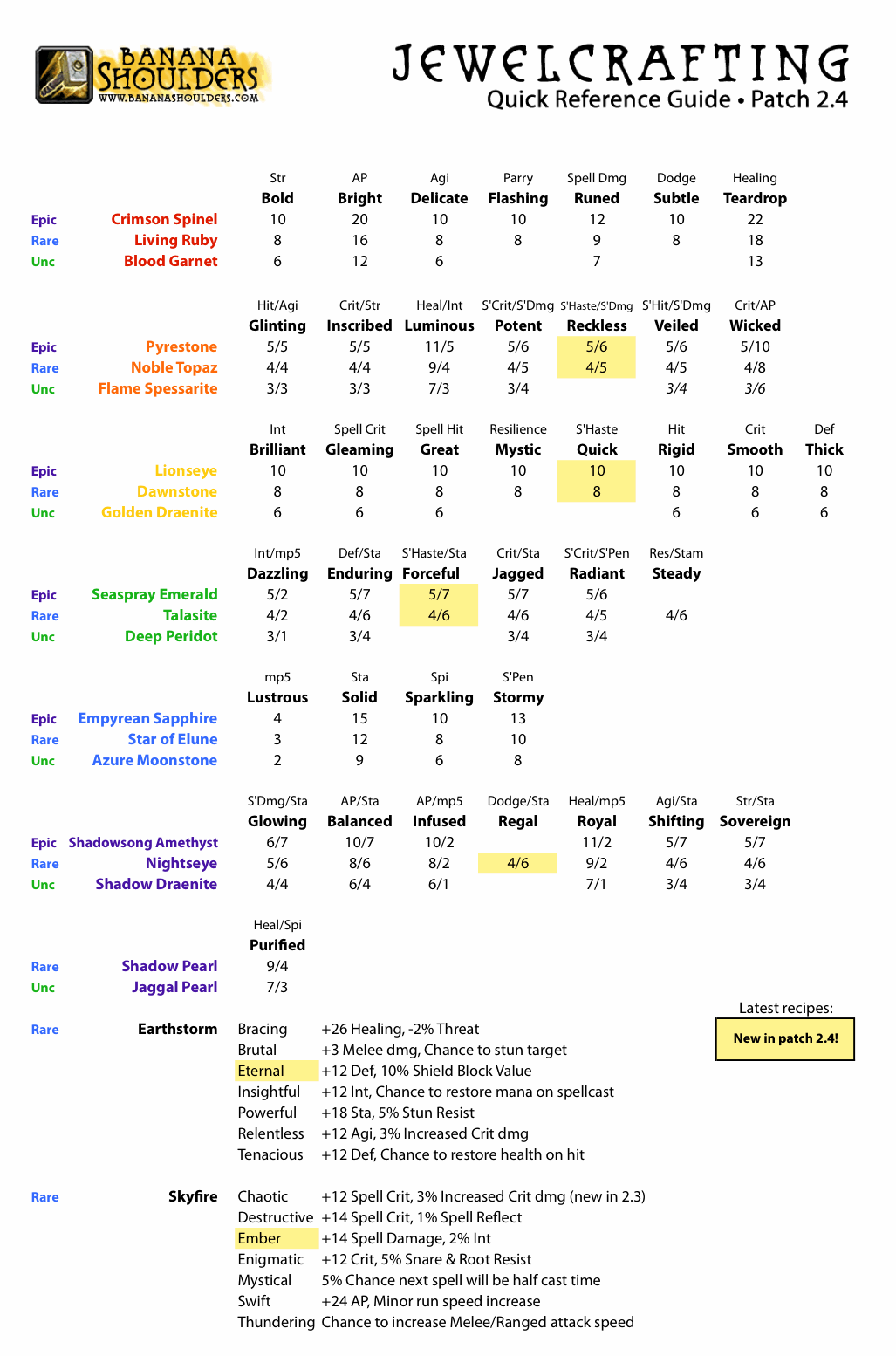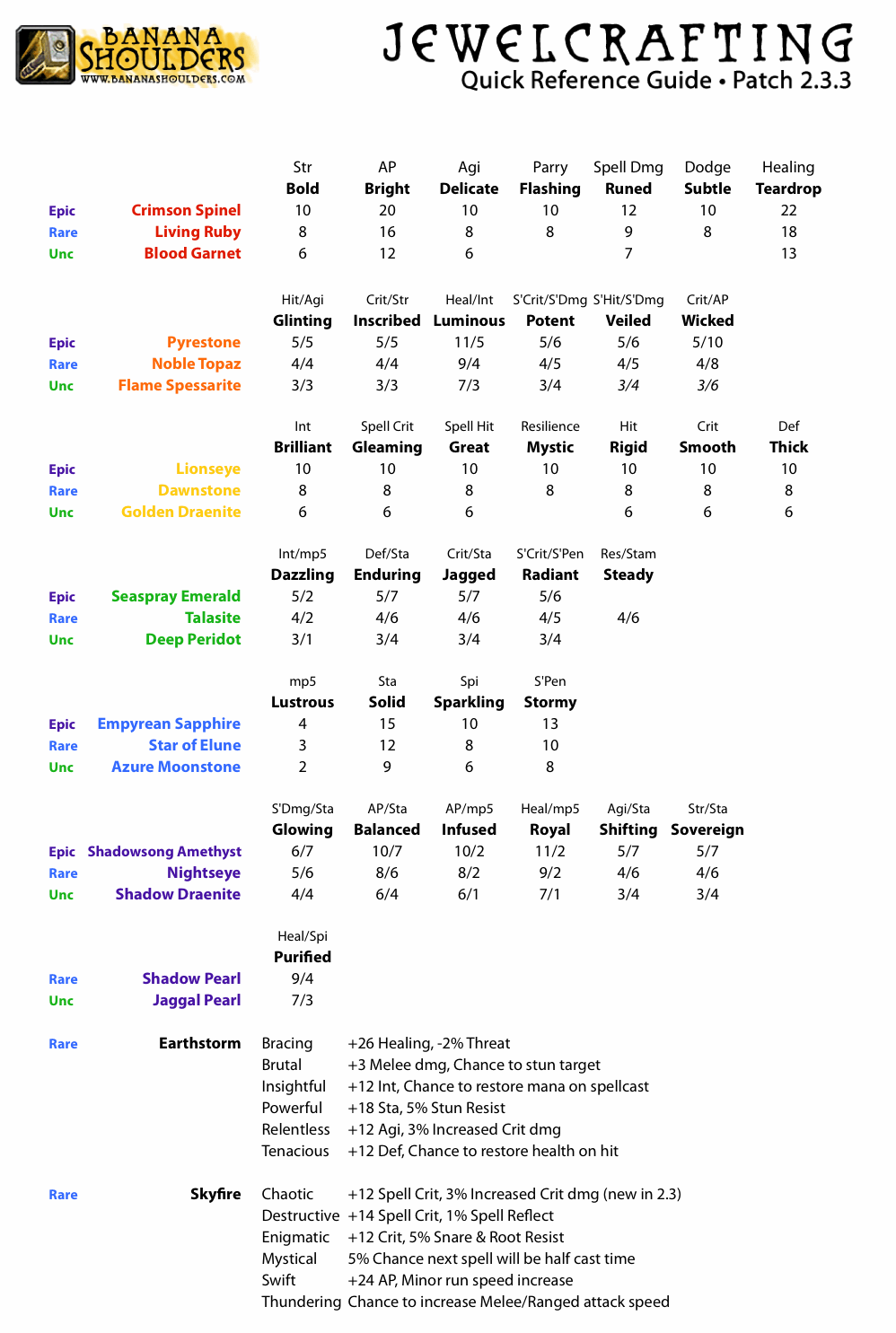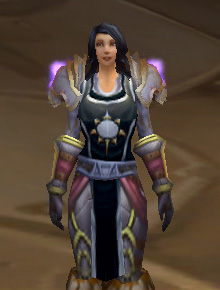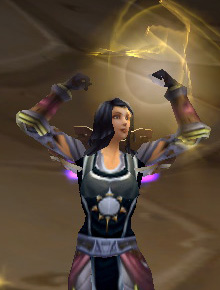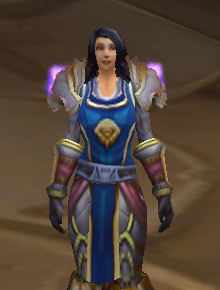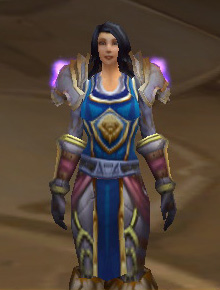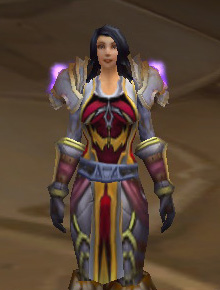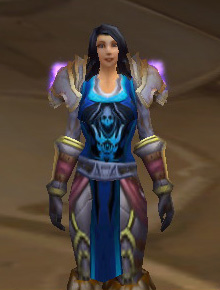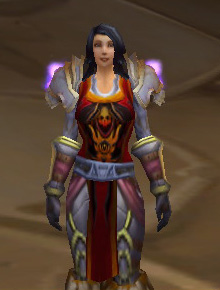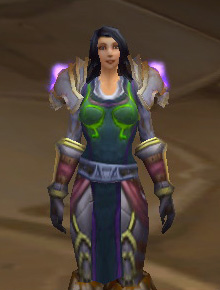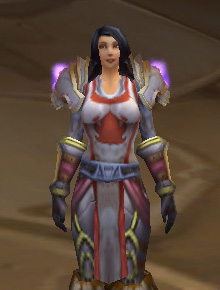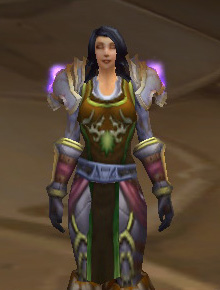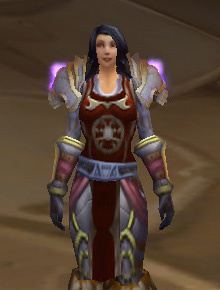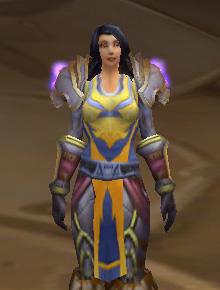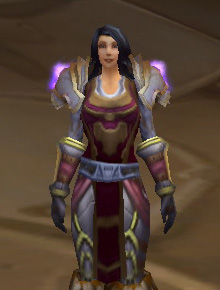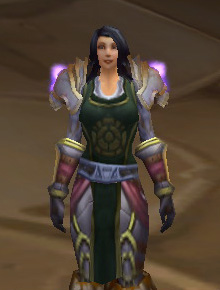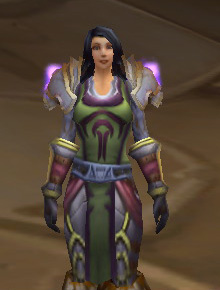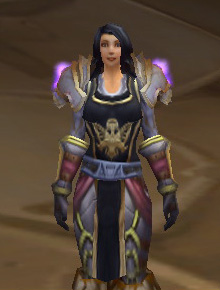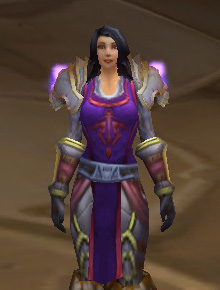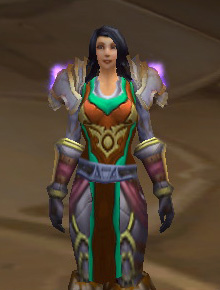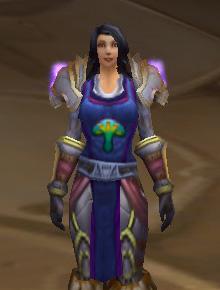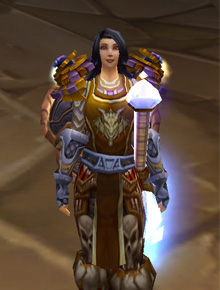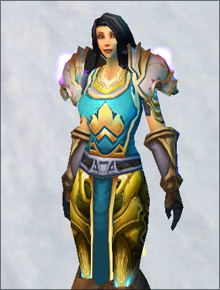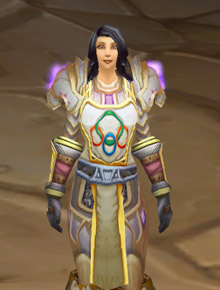Taking a quick break for the “Levelling a Pally” series, this is a look at tanking as a level 70 holy paladin. Some of the advice is relevant to sub-70 pallies (particularly spell choice and spell sequence); some isn’t (like the gearing discussion).
It’s pretty easy to tank when you’re a tankadin: you’ve got all the spells you need to make you uncrittable and uncrushable, and all you need is a bit of gear on top.
Tanking as a holy paladin is another matter – there’s nothing in the Holy tree that gives you any more survivability (except for Blessed Life, which is 31 points in and does not a tank make) – but that doesn’t mean you won’t have to do it. Regardless of your enthusiasm for healing, you are a plate-wearer, and sometimes people are going to need to hide behind you. Here’s a quick guide to how to be the best non-tank tank out there.
First of all, I’m assuming that you’re not going to be tanking (or offtanking) any raid bosses. You need to be Protection spec and more than minimally-geared to avoid Crushing Blows (which can be done by all raid bosses apart from a few in Zul’Aman), and unless your healers are really overgeared a crushable tankadin is a very bad thing.
That said, Holy Paladins still make great tanks for AoE trash in raids, and for 5-man instances. Despite being a healer to the core, I regularly tank AoE trash pulls in Karazhan and Zul’Aman, and I can tank pretty much any normal-mode 5-man without breaking a sweat. (I’m fairly confident I could comfortably tank most heroics, too, but there’s usually tanks clamouring for badges, so I don’t have to.)
Talents
If you expect to be doing a reasonable amount of tanking as a Holy Paladin, I’d recommend a talent build like the 40/21/0 Main Healer/Offtank build that I recommended in this post. For tanking, the important talents here are:
- Improved Righteous Fury: Gives you a lot more threat while Righteous Fury is up and reduces all damage you take. Essential for any real amount of tanking.
- Anticipation: increases your Defense skill by 20. That’s 20 skill, not 20 rating; it’s a huge boost to your survivability (and, being a passive bonus, it’ll make you a bit less crittable even in your healing gear, which is never bad).
- Redoubt: Block chance is a bit of a funny one to get your head around, because it’s easy to get Block Rating and Block Value mixed up. (Block Rating increases your chance to block with your shield; Block Value increases the amount that each block actually blocks for.)
In any case: shield block is a particularly useful mechanic when you’re facing lots of small attacks, because it knocks its block value off every piece of incoming damage – so you’re better off blocking 10 incoming attacks at 200 damage each than one attack at 2000 damage. So Shield Block really comes into its own when you’re AoE tanking large packs of weakly-hitting mobs, which pretty much defines a lot of early trash pulls in, say, Karazhan.
- The rest of the talents are really down to your own preference, although I’m a huge fan of Guardian’s Favor in particular. If you’re really desperate to go 41/20/0 so you can take Divine Illumination, I’d recommend dropping a point out of Toughness.
Gear
One of the problems with early tankadin gear (assuming you don’t have stacks of epic tanking gear picked up as offspec gear) is that a lot of the good tankadin quest rewards conflict with the best healadin quest rewards as well – so if you’ve been levelling to 70 with the intention of being a holy paladin, you’ve probably picked healer gear over tank gear to gear your primary role up first (as you should).
Here’s a quick list of gear choices that don’t conflict with healadin quest rewards, if you’re looking to throw together a reasonable tanking set. Stats-wise, you’re looking for:
- Enough Defense rating to get you to 485 Defense, which will make you uncrittable by level 72s and below.
- Stamina and Armor for taking the hits.
- Dodge and Parry for avoiding the hits.
- Spellpower for threat generation – generally, aim for a 1H caster weapon with high spell damage, and stack stam/dodge/parry/defense on your other pieces of gear. The spellpower from your weapon should be enough to hold agro until your DPSers get very well-geared.
- Generally you don’t actually need to gear for Int and mp5, as the heals you receive will regenerate your mana anyway (via Spiritual Attunement).
I haven’t actually sandboxed all this as a gear set, so it might be a trifle low on Defense rating; that may also happen if you’ve had to take some of the secondary recommendations for particular gear slots. I recommend either checking the gear out on a site like Warcrafter to see how it works as a set, or sitting down with your ungemmed, unenchanted gear and getting your Defense rating up first before you start gemming for stamina.
Here’s a sandboxed view of the gear set I outline below. As you can see, it actually stacks up to 508 defense, so you’ve got some Defense rating you can afford to loseWeight Exercise in favour of Stam or avoidance as you gear up with Karazhan loot or badge rewards.
Note that this gear list assumes you have zero access to raid-level gear; if you can pick up some pieces (like the Kara tanking epics) they’ll provide very large upgrades over many of the items I’ve listed here. This post from Zen is an excellent guide to the evolution of gear in each slot, and also highlights some useful craftables that rate very highly (eg the Tankatronic Goggles if you’re an Engineer), and in fact that post served as a handy reminder for quite a few gear pieces I’d forgottten while writing this post.
Helm: Felsteel Helm – BoE craftable with Blacksmithing; get one made or buy one off the AH. Fill it with stamina gems, and put a Glyph of the Defender (Revered Keepers of Time) on it.
Neck: Strength of the Untamed – Revered Cenarion Expedition.
Shoulders: Spaulders of the Righteous (from Laj in Botanica). Fill it with stamina gems, and add Greater Inscription of Warding (Exalted Aldor) or Greater Inscription of the Knight (Exalted Scryers).
Back: Devilshark Cape (from Kalithresh in Steamvaults) with a +12 Agility enchant.
Chest: Vindicator’s Hauberk (Revered Aldor), or failing that Jade-Skull Breastplate (from Nethermancer Sepethrea in Mechanar) for Scryers. (If you’re Scryer and can’t get the Jade-Skull Breastplate, next best is Breastplate of the Righteous from Kalithresh in Steamvaults, filled with stamina gems.) Add a +150 Health enchant.
Bracers: Bracers of the Green Fortress are BoE epics from Blacksmithing, and by far the best option pre-Karazhan. +12 Stamina enchant.
Gloves: Felsteel Gloves, again BoE made by Blacksmiths. Fill with stamina gems and add a +15 Agi enchant or a Heavy Knothide Armor Kit.
Belt: Sha’tari Vindicator’s Waistguard from the Arcatraz key quest. If you vendored it or chose a different reward, try Lightwarden’s Girdle (reward from Deathblow to the Legion, the Aldor quest to kill Socrethar in Netherstorm) or Girdle of the Immovable (from Quagmirran in Heroic Slave Pens).
Legs: Timewarden’s Leggings (Revered Keepers of Time) with a Clefthide Leg Armor attached. These are amazingly good for blues, and will serve you very well for a long time.
Boots: Flesh Beast’s Metal Greaves from the Mana-Tombs quest. That was back at level 66, though, so if you’ve vendored them since then (like I did), try Boots of Righteous Fortitude (from Anzu in Heroic Sethekk Halls) or Boots of the Colossus (from Pandemonious in Heroic Mana-Tombs).
Rings: Elementium Band of the Sentry (from Skyriss in Arcatraz) and Andormu’s Tear from the quest to finish the Caverns of Time: Black Portal instance. If you chose the healing ring from those quest rewards, replace Andormu’s Tear with a Delicate Eternium Ring, a BoE craftable by Jewelcrafters.
Weapon: You have several choices here. Your bestest bet is the Season 2 arena weapon Merciless Gladiator’s Gavel. If you don’t PvP, go for the Continuum Blade (Revered Keepers of Time). Either way, put a +40 Spellpower enchant on it.
Shield: Crest of the Sha’tar (Exalted Sha’tar) is your best choice here. Alternatives are Ogri’la Aegis (1 Apexis Crystal and 50 Apexis Shards at Revered Ogri’la) or Platinum Shield of the Valorous (from Ambassador Hellmaw in Shadow Labs). Fill gem sockets with stamina gems, and add a +18 Stamina enchant.
Relic: Libram of the Eternal Rest (from Darkweaver Syth in Sethekk Halls) for AoE tanking, or Libram of Saints Departed (from The Maker in Blood Furnace), Libram of Divine Purpose (20 Badges of Justice) or Libram of Zeal (15 Marks of Honor Hold/Thrallmar) for single-target tanking. Remember they’re swappable in combat, of course. :)
Trinkets: On the one hand, picking trinkets is tricky because they can do so many things. On the other hand, picking trinkets is easy because it’s hard to get access to good ones. For avoidance trinkets, try Adamantine Figurine (from Blackheart in Shadow Labs) or Figurine – Dawnstone Crab (BoP trinket made by Jewelcrafters). For pure stamina, the Commander’s Badge is good (Revered Netherwing), or Gnomish Poultryizer, Goblin Rocket Launcher or Figurine – Living Ruby Serpent (BoE Engineering-required and BoP Jewelcrafting-only trinkets respectively) are options if you don’t have an epic flying mount. And the Darkmoon Card: Vengeance (from a Darkmoon Furies Deck) is fantastic both for its huge Stamina bonus and its reflected damage; I put one together and have never regretted it despite the expense.
Tankadin consumables are well-summarized here, and there’s nothing more for me to add. You should carry a reasonable selection of these when you expect to be tanking; they’re a huge boost to your efficacy without expensive regearing, regemming, or respeccing.
Comparing Gear
I recommend the TankPoints addon; it calculates an overall “TankPoints” value for every piece of gear you have, balancing out the gear’s tanking-relevant stats. It adds a line to your item tooltips giving you the TankPoints of an item relative to your currently-equipped item, so you can tell if it’s an up- or down-grade.
TankPoints also comes with a calculator – which you can access using the drop-down menus on your character paper doll – where you can add or subtract stats to see the effect on your tankpoint total. (Eg “what if I replaced this +9 Stam blue gem with a +8 Dodge red gem, allowing me to get the socket bonus of +3 Parry as well?” Use the calculator to deduct 9 Stam and add 8 Dodge and 3 Parry, and see if your overall TankPoints go up or down.)
Note that TankPoints does not take into account your need to maintain a certain Defense rating to be uncrittable, for example. So if a gear change will drop you below that rating, it doesn’t take it into account – you’ll need to bear the “485 Defense” hard limit in mind yourself.
But Why 485 Defense? I Thought 490 Was The Magic Number?
490 Defense is the magic number – if you’re going to be tanking raid bosses. It makes you uncrittable to Level 73s. However, if you’re tanking raid bosses you really need to be uncrushable as well, and you’re not going to achieve that without a) going Protection spec and b) having better gear than I’ve listed above. If you’re not going to be tanking raid bosses, the toughest mobs you’ll be facing will be Level 72s, and they only require 485 Defense to be uncrittable against – so you may as well shoot for that number and save the extra item budget for use on stamina or avoidance.
Make sense?
Spell Usage
Okay, so, here’s what you need to know – your threat comes from two main sources: Holy damage that you deal (which scales with spell damage on your gear), and reflective damage that mobs deal to themselves by whaling on you.
Tankadins use a number of staple spells to build and maintain threat: Righteous Fury (and Improved Righteous Fury), Avenger’s Shield, Holy Shield (and Improved Holy Shield), Blessing of Sanctuary, Consecration, Retribution Aura, Righteous Defense, and Judgement of the Crusader + Seal/Judgement of Righteousness or Seal/Judgement of Vengeance. (Do blood elf tankadins use Seal of Blood?) Three spells from this list – Blessing of Sanctuary, Holy Shield and Avenger’s Shield – are reliant on having points in the Protection tree (21 points, 31 points and 41 points respectively), and holy pallies just aren’t going to have the talent points spare to get either of them. (Don’t try and go 30/31/0 to get Holy Shield while still being a healer, that just means you’ll do a mediocre job of two roles, instead of one.) On the other hand, Improved Righteous Fury only requires 13 points in Protection, and is really a must-have.
However, holy paladins have all the other spells listed above, and a couple more advantages besides. Here’s how to use them.
Righteous Fury: This is what makes you a tank, not a healer with agro.You should have this up at all times, barring nubface moments where it wears off and you haven’t noticed. (Even main tanks do it. Heh.) Pay attention; don’t let these nubface moments happen. :)
Aura: Unless you really need the armor of Devotion Aura, or a specific elemental Resistance Aura, you should use Retribution Aura for the reflective damage. It has a significant impact on your threat, and is key for holding threat levels against multiple mobs. It’s even more important for us than for tankadins – they can get reflective damage off Holy Shield and Blessing of Sanctuary. All we’ve got is Retribution Aura. Use it.
Blessing: You won’t be getting Blessing of Sanctuary – if there was a prot pally around to give it to you, they’d be doing the tanking! – so generally Blessing of Kings is the standard of choice. If you’re not going to be copping too much of a beating, you may prefer Blessing of Wisdom for mana regeneration, but that’s a choice you should only make if you know you can handle the pull safely.
Consecration: This should be constantly up if you’re AoE tanking; the threat output it provides is massive. If you’re only tanking a single mob, you may wish to be more judicious with this spell as it chews through a lot of mana; use a Consecrate or two at the start to build good agro, then lay off it unless your DPSers are really pushing you for threat. Also, Consecrate will obviously break CC (and is particularly dangerous when your CCers are mages, as sheep do tend to wander) – but then, you’re an AoE tank! Why are you using CC in the first place?
Seals and Judgements: On long fights (ie against bosses), you’ll want the threat lead that a Judgement of the Crusader will give you (by amplifying your Holy damage); in these cases, lead off with a Judgement of Righteousness for a quick threat burst, then lay on Judgement of the Crusader with your next Judgement cooldown, then continue with Seal and Judgement of Righteousness for ongoing threat. Against trash, it’s probably not worth laying down the Judgement of the Crusader, just stick with Righteousness – particularly on AoE pulls, where you’d waste a lot of threat-generation time trying to get JotC onto every mob.
Holy Shock: This is one advantage that Prot Pallies don’t have; it might not have the massive threat output of Avenger’s Shield, but on the other hand it’s an instant. Pair it with Divine Favor for a guaranteed crit that’ll do about 1k damage at ~350 spell damage (compared with 750 damage from a crit JoR) and a decent threat burst, from up to 20 yards away. Or self-cast it for an instant heal if you need an emergency health top-up and your pot’s on cooldown.
Exorcism: This one’s situational, only applying to demon and undead enemies – but there’s lots of those in TBC. It’s an instant direct-damage spell, so that translates to an instant burst of threat.
Righteous Defense: This is the pally taunt, but it works differently from bear and warrior taunts. It’s actually an instant, no-duration ‘buff’ cast on an ally, and will redirect up to 3 mobs attacking that target onto you instead. This has several issues you’ll need to be aware of:
- It has a 15-second cooldown. Your DPSers need to know that you can’t just mash taunt and pull everything off them all the time; if they pull agro, they need to give you a chance to get the mob back under control before they open up again.
- In the heat of a fight, using this spell vanilla is a pain in the ass, because you have to target your party member and RD them to get the mob(s) back. What you can do is use a RD macro to make it act sort of like a normal taunt.
#show Righteous Defense
/cast [help] Righteous Defense; [target=targettarget,help] Righteous Defense
This macro: shows the cooldown for RD on its tooltip; casts RD on the target if the target is friendly; otherwise, casts RD on the target-of-target. So, you’re tanking a boss, you see its target change from you to the crit-happy hunter who’s forgotten where their Feign Death key is, and you can immediately hit this macro to pull the mob right back to you (as your target is the boss, the last part of the macro takes effect and it casts RD on your target’s target – ie the hunter).
- The mechanics of this actually make CC pulls very viable. Say you have a 4-pull where you want to sheep one mob and tank the rest? Get the mage to sheep the CC target, and all the other mobs will start running at the mage. Just slap RD onto the mage and 3 of those mobs will immediately start running directly at you instead; just make sure your DPSers hold off on the AoE til the mobs actually reach you and hit your Consecrate.
Hopefully this proves useful to those of you who are in the same boat as me – this is the result of a lot of reading, pondering, and bothering of my guild’s tankadin. If there’s anything I’ve got wrong or anything you’d like to see discussed, let me know!
Edit: Honors Code beat me to the punch by a week! His post particularly addresses the route of a hybrid spec, and there’s some really good points there – go check it out.
